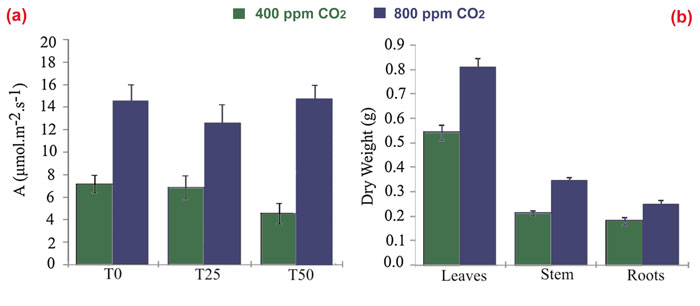| Tweet | Follow @co2science |
Paper Reviewed
Bencke-Malato, M., De Souza, A.P., Ribeiro-Alves, M., Schmitz, J.F., Buckeridge, M.S. and Alves-Ferreira, M. 2019. Short-term responses of soybean roots to individual and combinatorial effects of elevated [CO2] and water deficit. Plant Science 280: 283-296.
In the words of Bencke-Malato et al. (2019), soybean (Glycine max) is "the most economically important legume worldwide," and "is widely used for human and animal consumption due to the high protein and oil contents in its seeds and serves as a source for biodiesel production." Given such agricultural prominence, the team of six scientists say it is important to understand the physiological, biochemical, and genetic responses of soybean to rising concentrations of atmospheric CO2, as well as possible changes in climate, so as to develop strategies for maintaining and/or improving its yield potential in the future. Thus, Bencke-Malato et al. set out to investigate the individual and combined effects of elevated CO2 and water deficit on soybean growth.
Their work was conducted on a drought-tolerant cultivar (Embrapa 48), which was grown hydroponically under controlled-environment conditions in a greenhouse at the University of São Paulo, São Paulo, Brazil. In the experiment, half of the plants were exposed to ambient CO2 concentrations (400 ppm) and half to elevated CO2 concentrations of 800 ppm for 24 days (until the V3/V4 stage). Thereafter, a water deficit treatment was applied by removing plants out of their hydroponic solution and exposing their roots to ambient or elevated CO2 air for 0, 25 or 50 minutes. Various physiological and gene expression measurements were made on the plants at each of these three water deficit time steps to evaluate for any influence of elevated CO2.
In discussing their findings, Bencke-Malato et al. report that, prior to water deficit initiation, elevated CO2 increased photosynthesis by 103%, which photosynthetic improvement lead to increases in leaf, stem, root and total biomass by 49.3%, 61.6%, 37.9% and 50%, respectively (see Figure 1 below). What is more, elevated CO2 also increased plant height by 18% and leaf area by 43%.
When water deficit was applied, net photosynthesis under ambient CO2 declined by approximately 46% after 25 minutes (relative to T0) and 84% after 50 minutes (again, relative to T0). In contrast, net photosynthesis under elevated CO2 experienced no decline (relative to T0) after 25 and 50 minutes of water deficit. Bencke-Malato et al. also note that elevated CO2 induced a reduction in stomatal conductance, which they say led to an increase in plant water use efficiency that "promoted the maintenance of photosynthetic rates and fresh weight of leaves ... up to 25 min of water deficit," and which "suggests that elevated CO2 buffers the adverse effects of water deficit by maintaining the water content in the plant."
With respect to genome-wide expression profiling, the authors identified 302 genes that were differentially expressed in the soybean plant roots grown under ambient versus elevated CO2. Of these differentially expressed genes, most (274) were down-regulated as opposed to up-regulated (28). In particular, down-regulated genes at elevated CO2 were generally related to iron uptake and transport, antioxidant activity, secondary metabolism and defense and stress response. When plants were grown under elevated CO2 and treated with instantaneous water deficiency, Bencke-Malato et al. found that elevated CO2 "reverted the expression of water deficit-induced genes related to stress, defense, transport and nutrient deficiency." Consequently, it was the overall conclusion of the researchers that "both physiological and transcriptomic analyses demonstrated that elevated CO2 may mitigate the negative effects of water deficit on soybean roots." And that is wonderful news for those who grow and consume this important crop!

Figure 1. Panel a: Net photosynthetic rate (A) of soybean plants cultivated under ambient (400 ppm) or elevated (800 ppm) CO2 measured at 0 (T0), 25 (T25) and 50 (T50) minutes of water deficit (where roots were taken out of hydroponic solution and exposed to ambient air. Panel b: Dry weight of soybean leaves, stem and roots growing under ambient (400 ppm) or elevated (800 ppm) CO2 for 24 days. Source: Bencke-Malato et al. (2019).




